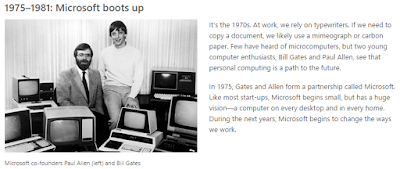Lesson Objectives
- Understand the software development life cycle
- Be able to explain what commonly occurs at each stage of the software development life cycle
- Be able to identify at which stage of the software development cycle a given step would occur
- Discuss the advantages and disadvantages of the cyclical and waterfall system life cycle models
Starter
Main
Red Task
Having watched the presentation above, work through Worksheet 1a
Having watched the presentation above, work through Worksheet 1a
Amber Task
Look at the History of Windows website HERE
Answer the following questions: (Electronic version - Worksheet 1b)
Look at the History of Windows website HERE
Answer the following questions: (Electronic version - Worksheet 1b)
Questions:
- Who started up Microsoft in 1975?
- What does MS-DOS stand for?
- What was the original name considered for the user
interface instead of “Windows”?
- How much disk space and memory did Windows 1.0
require?
- Windows 2.0 was released in 1987. What hardware
advances prompted the release of Windows/386?
- When did Microsoft become the world’s largest PC
software company based on sales?
- How was Windows 3 software installed on a PC?
- In 1995, Microsoft released Windows 95. How many
copies were sold in the first 5 weeks after release?
- What were the important new features in Windows 95?
- Internet Explorer was also released in 1995. What type
of software is this? Systems or Application?
- How many beta testers worldwide tested Windows 7
before its release in 2009?
- What major features were introduced in Windows 8.1,
released in 2013?
Green Task
Use easel.ly to create an Infographic of Software Development
Examples
Plenary
Do some research on Alpha and Beta Testing.What is the difference between the two?

Add some useful notes on Software Development to your Blog.




No comments:
Post a Comment